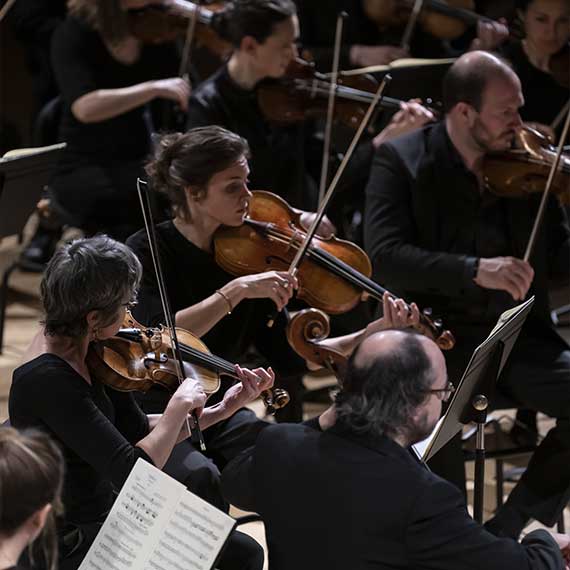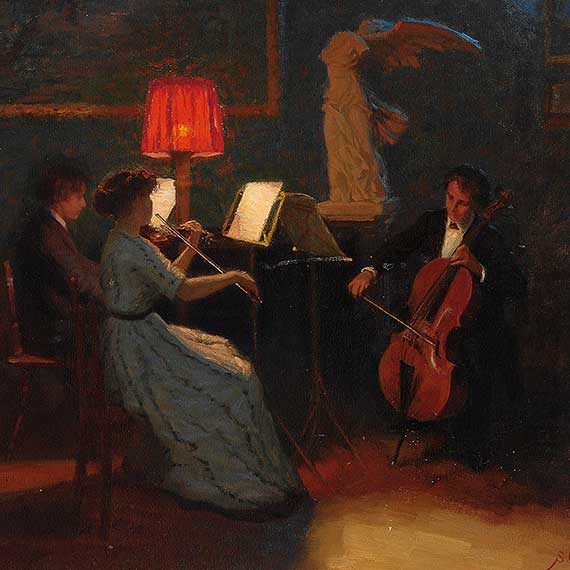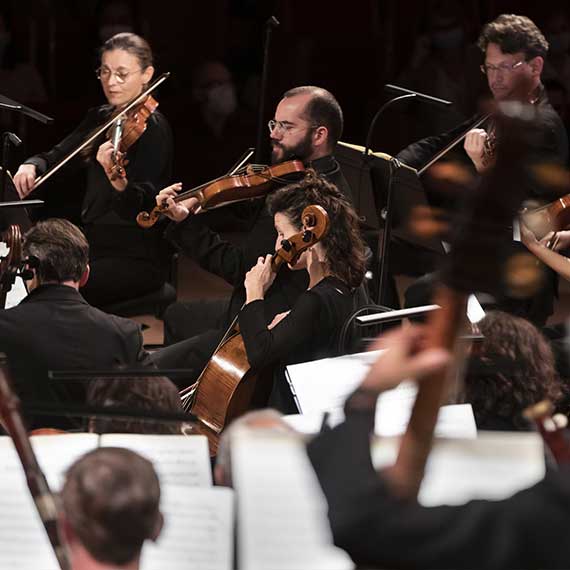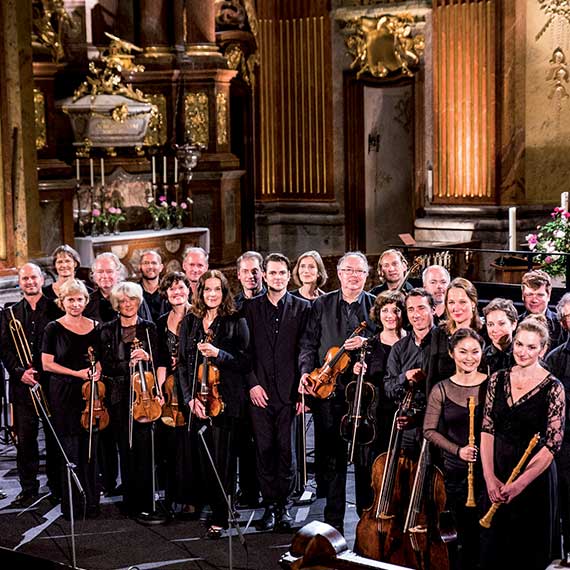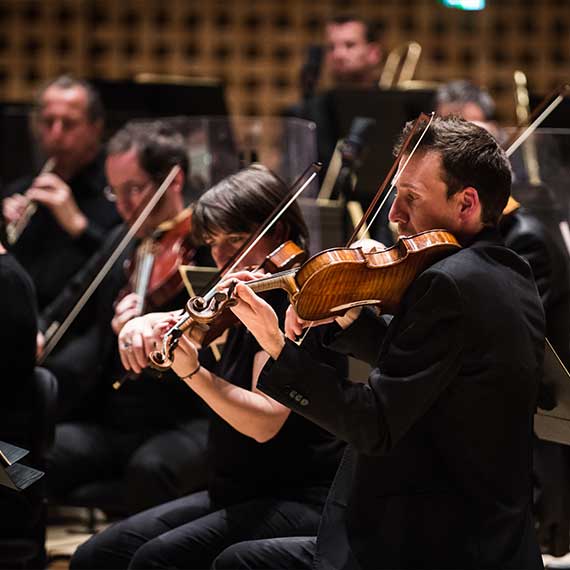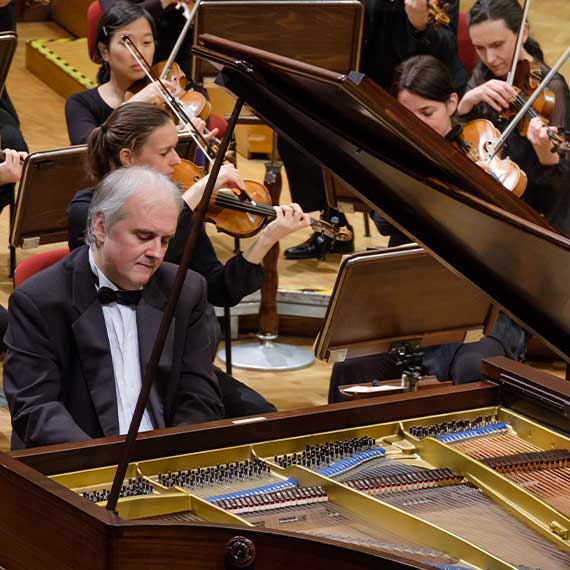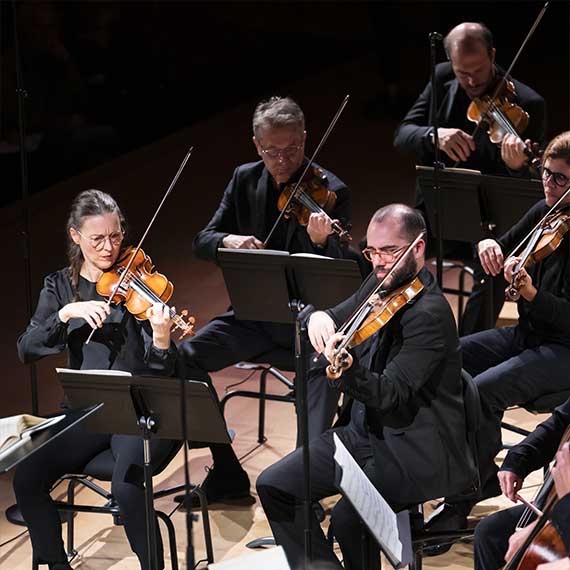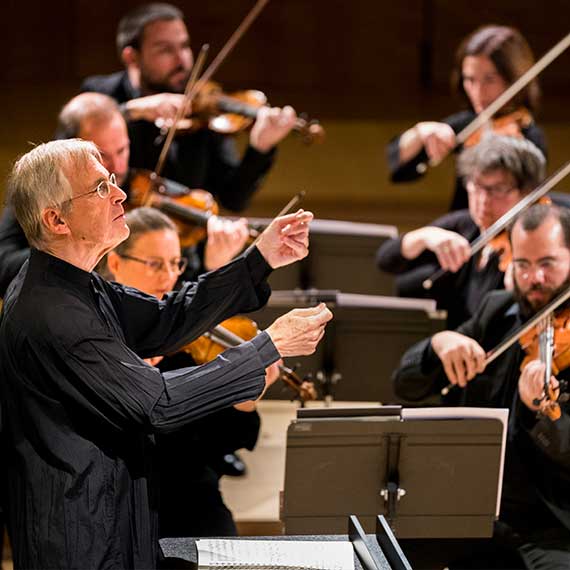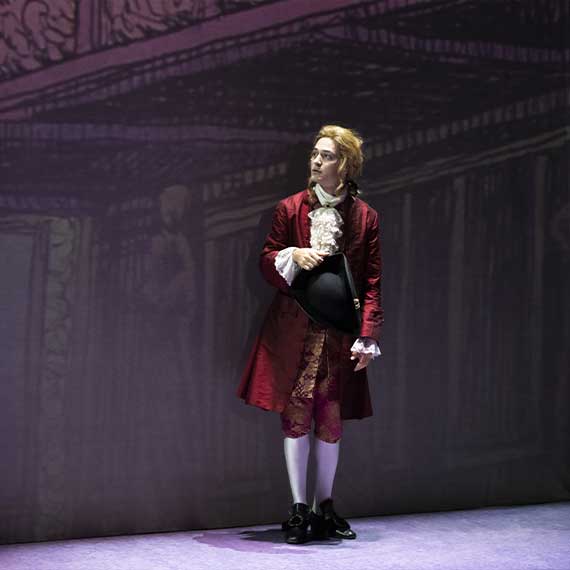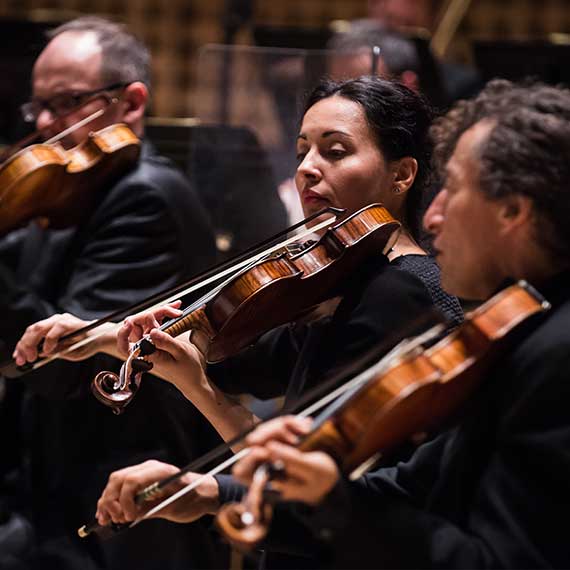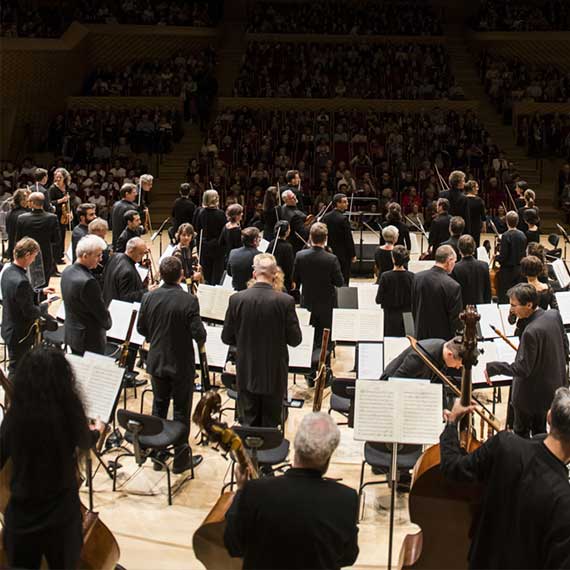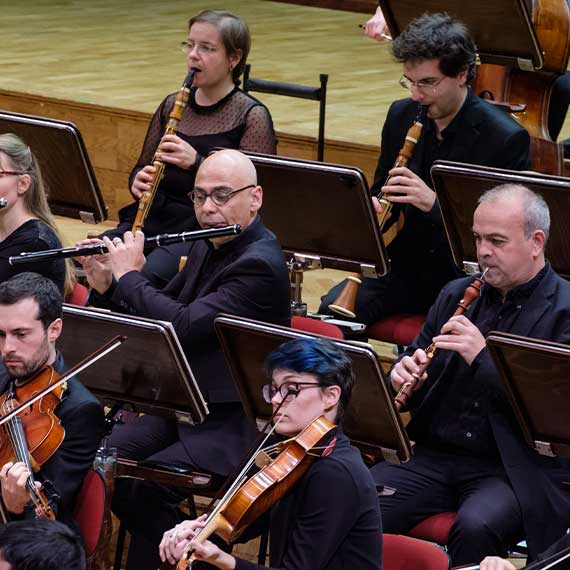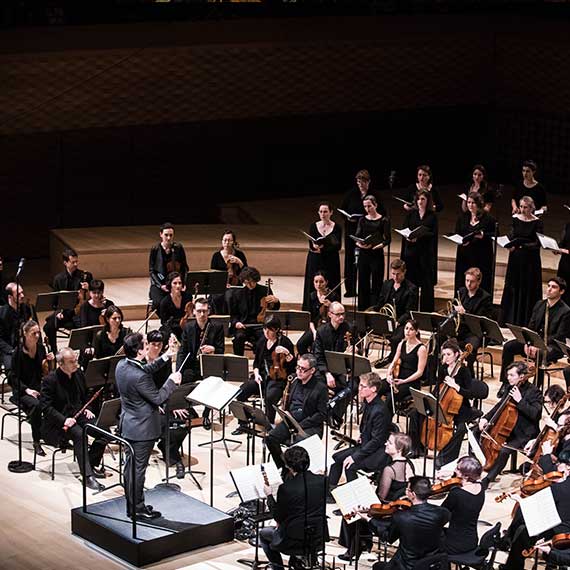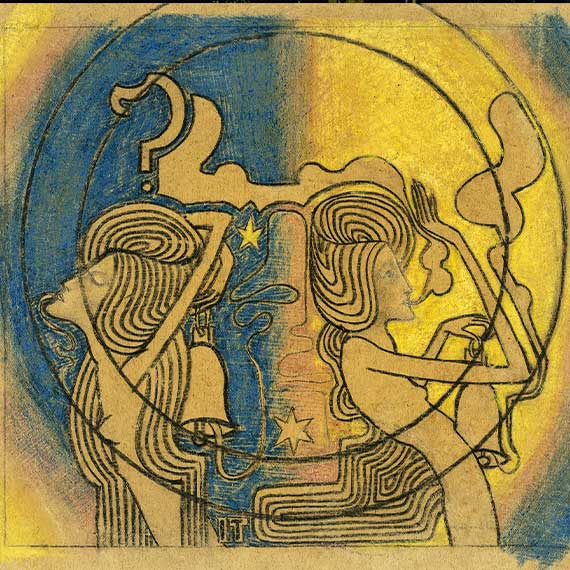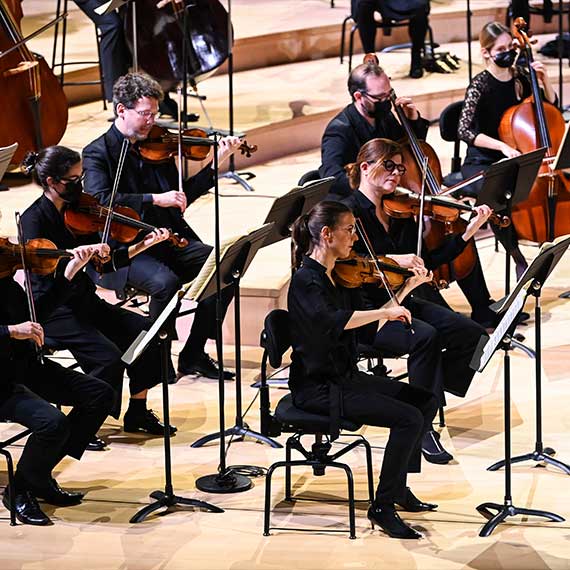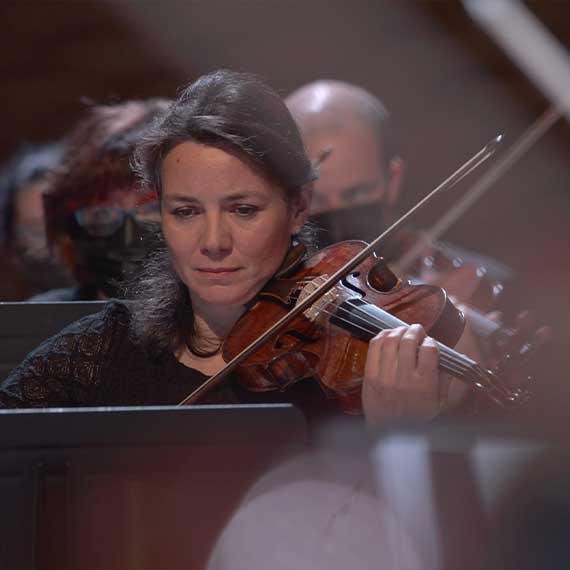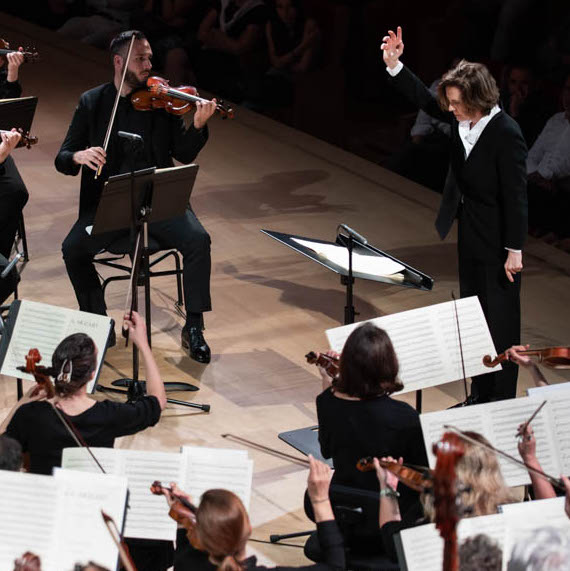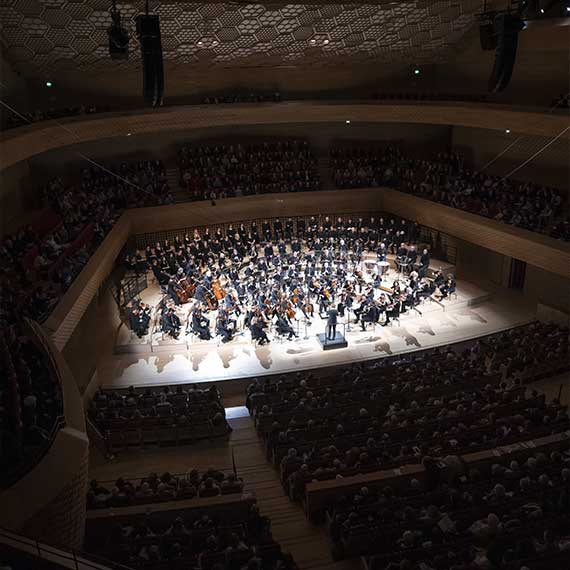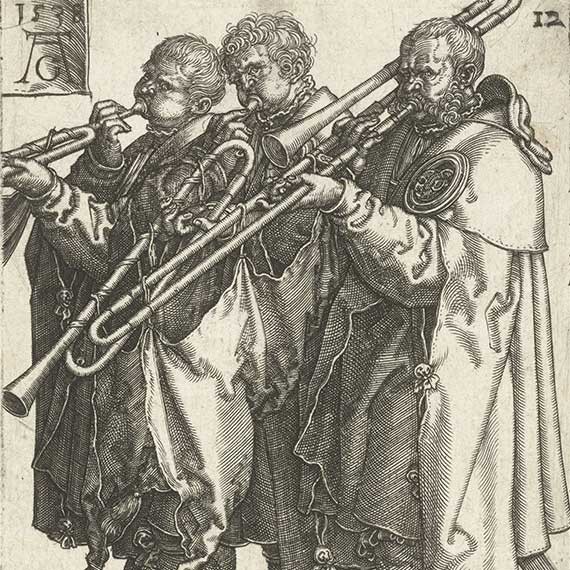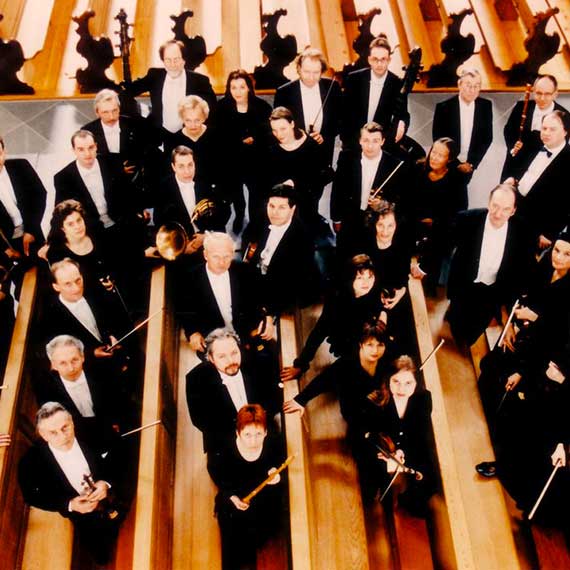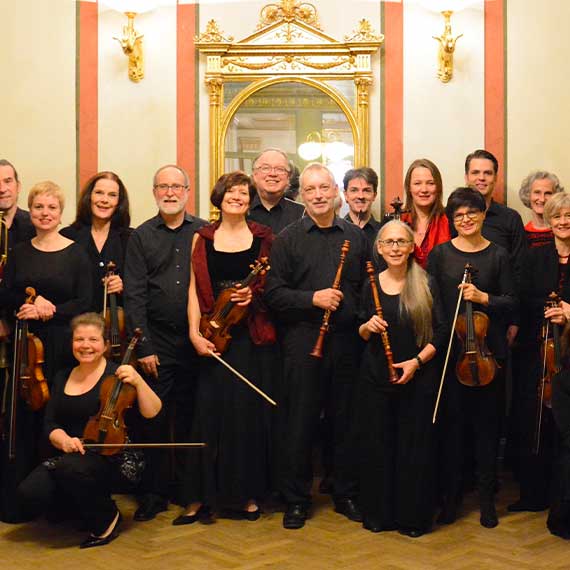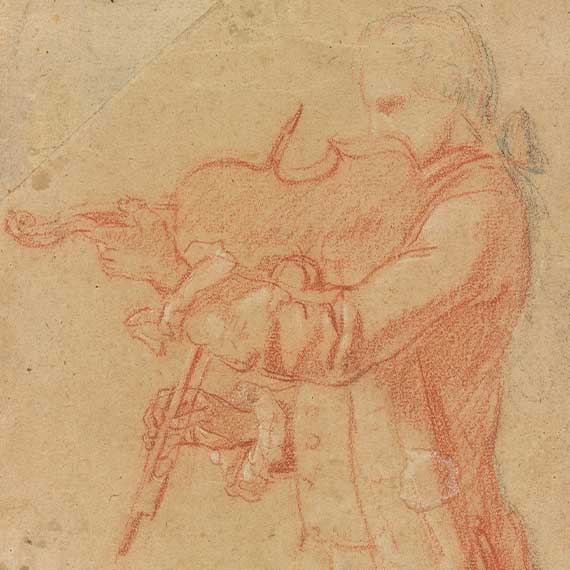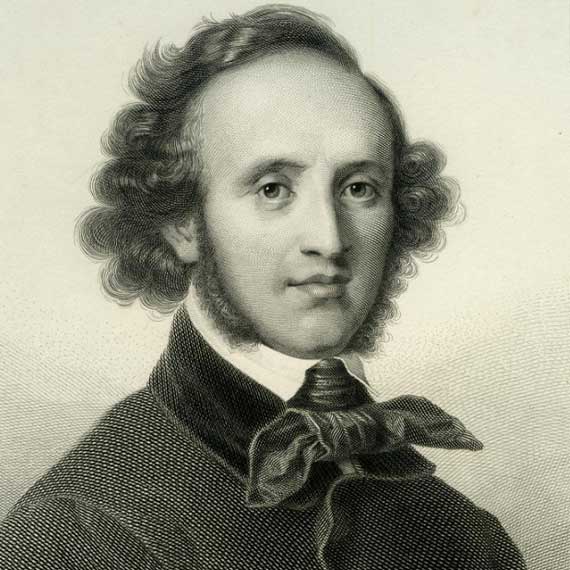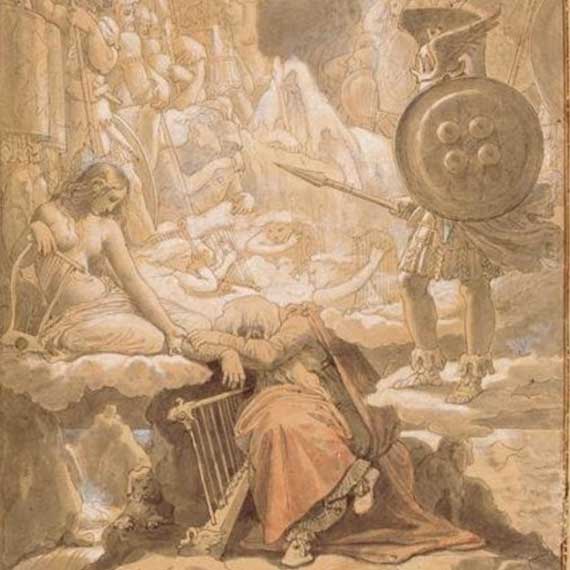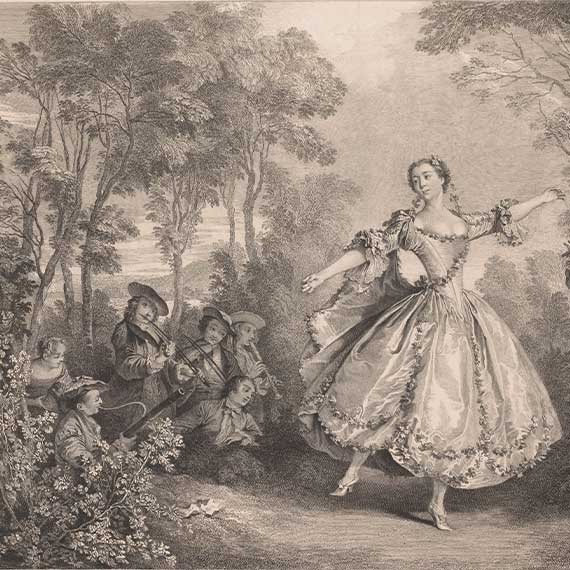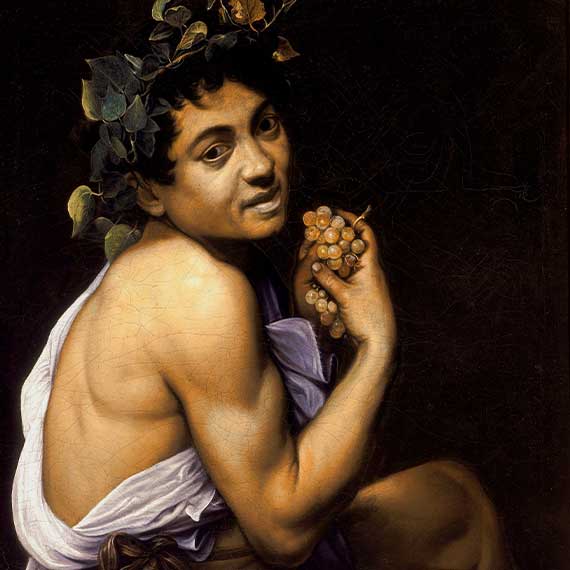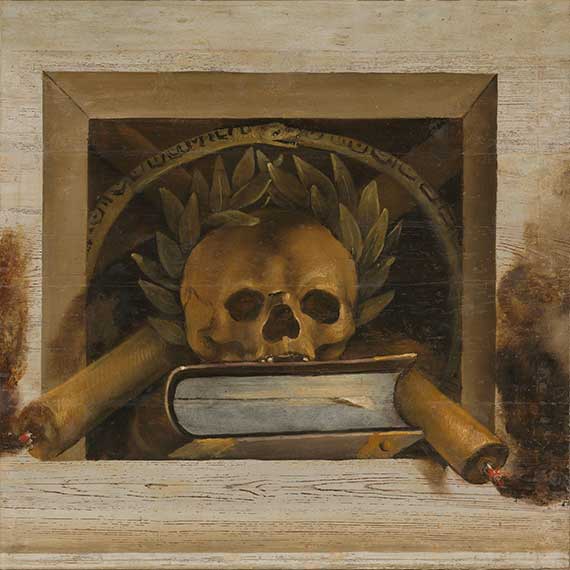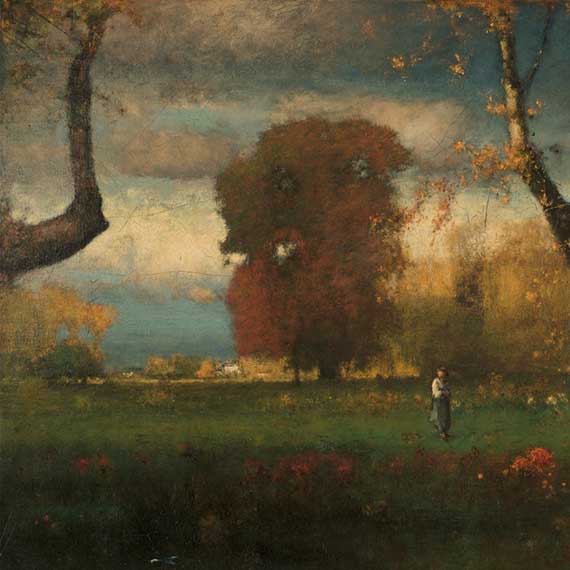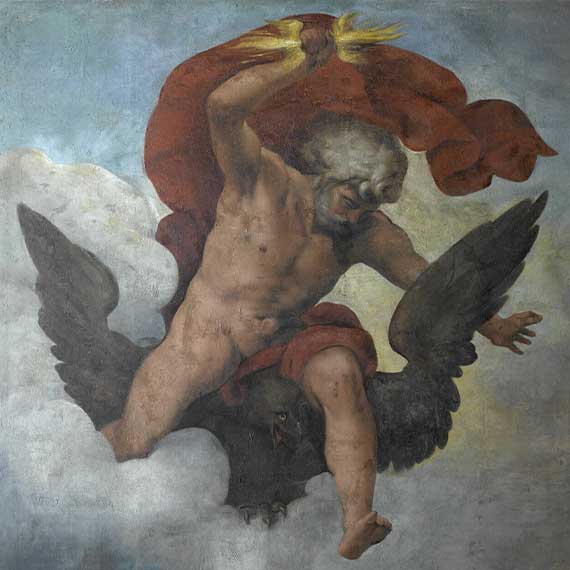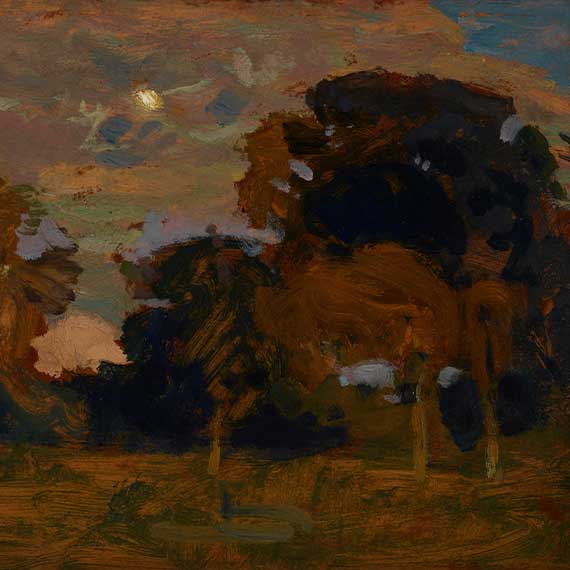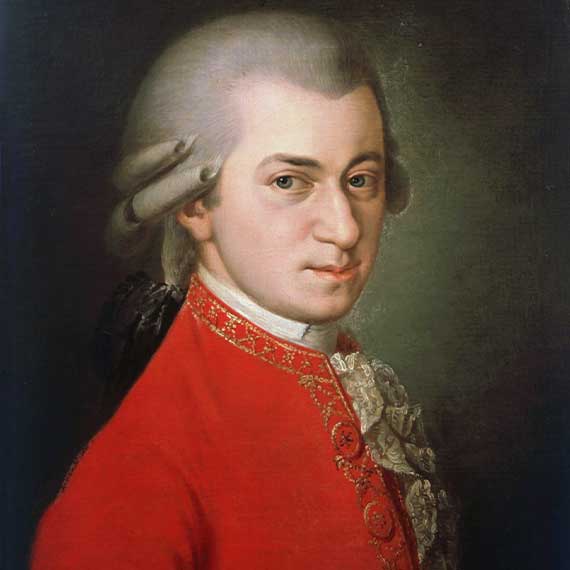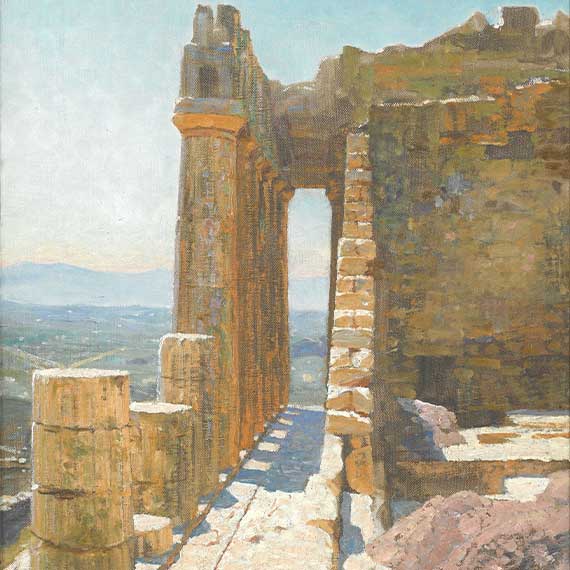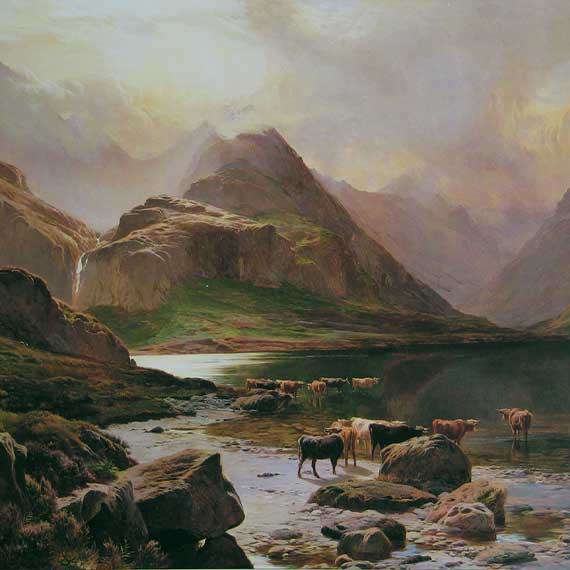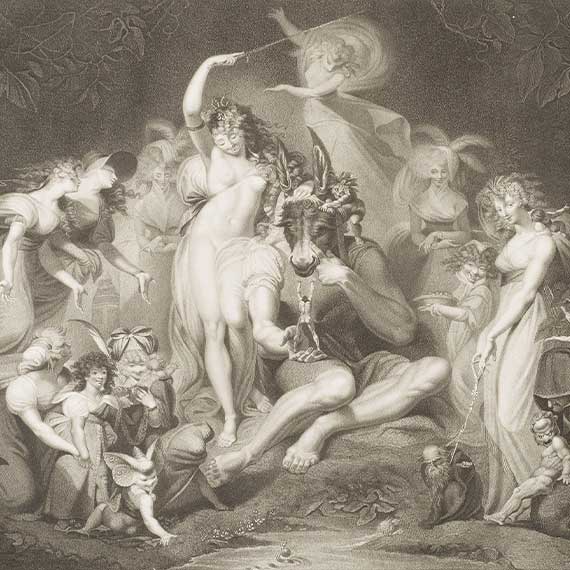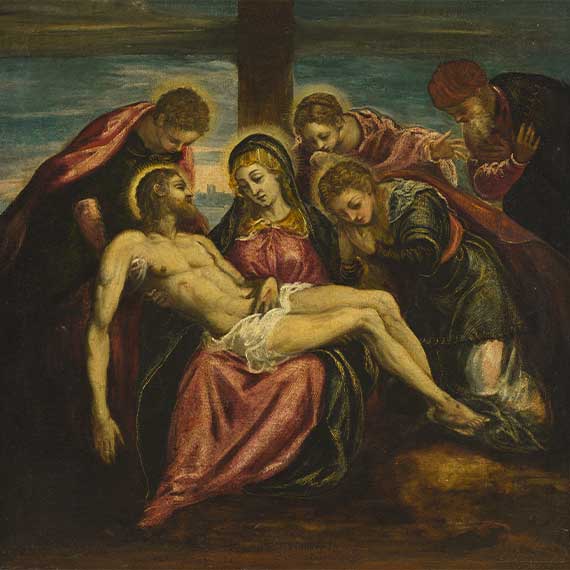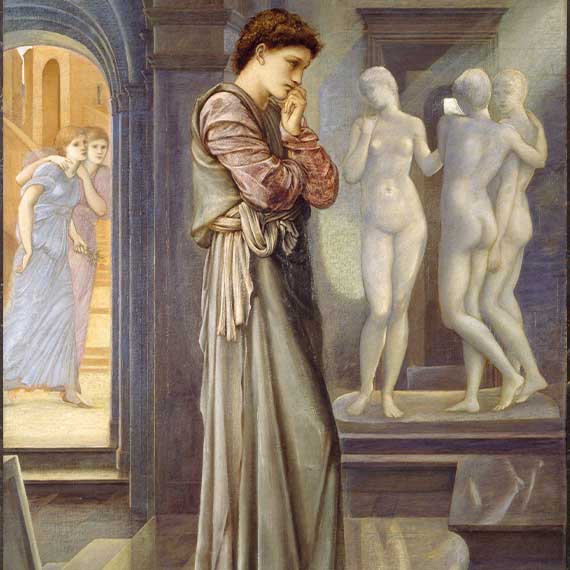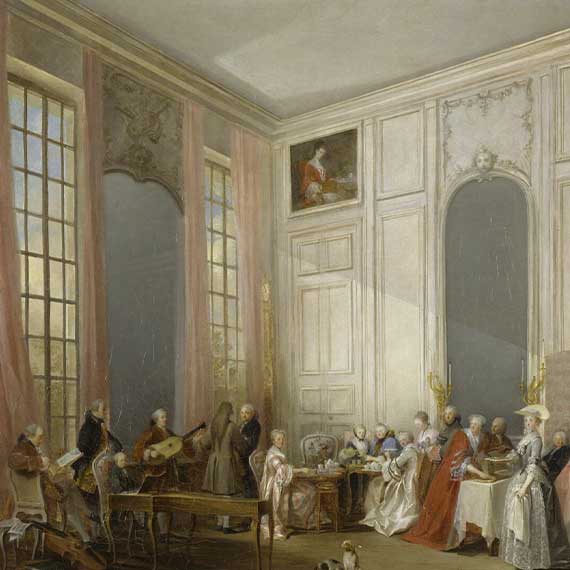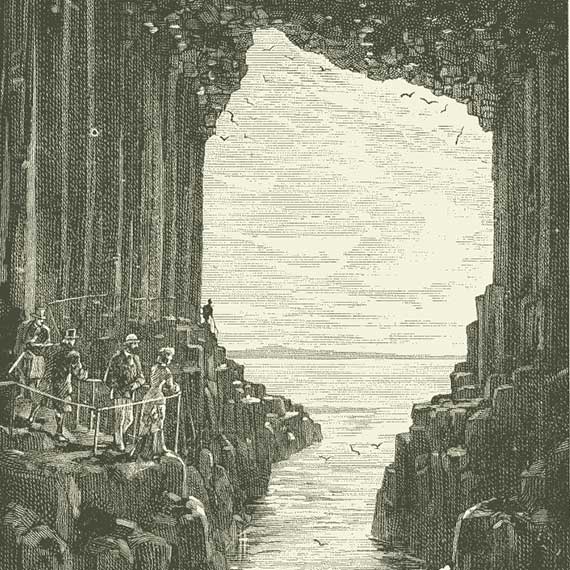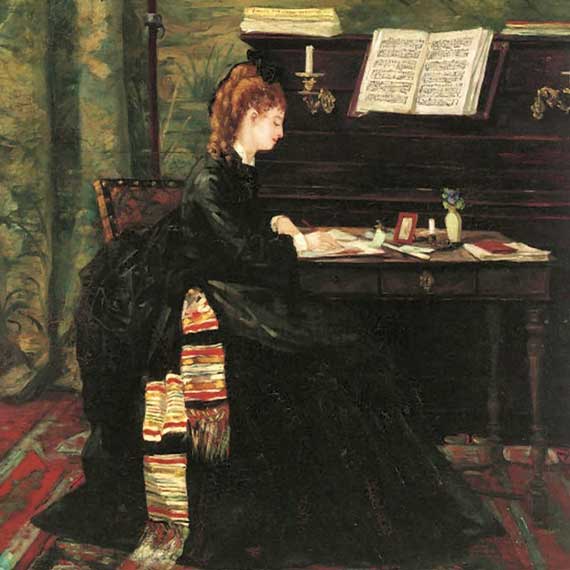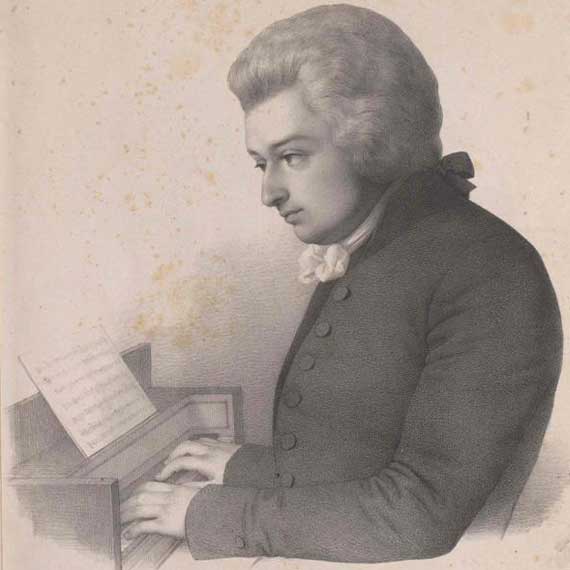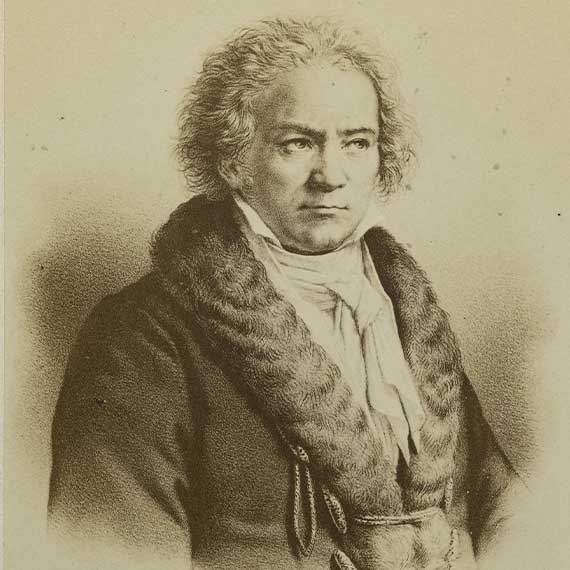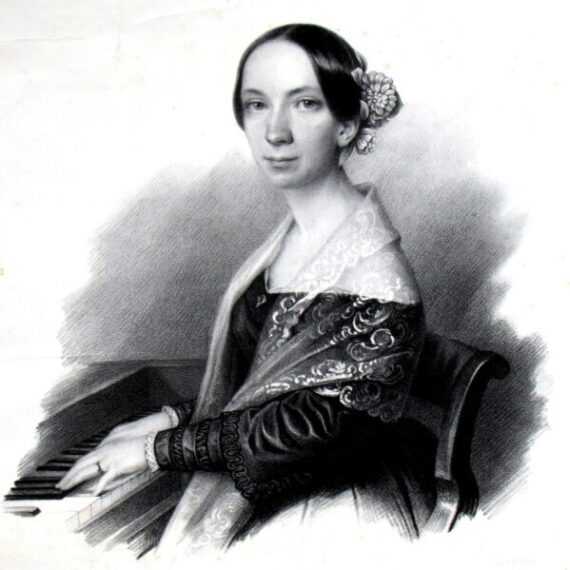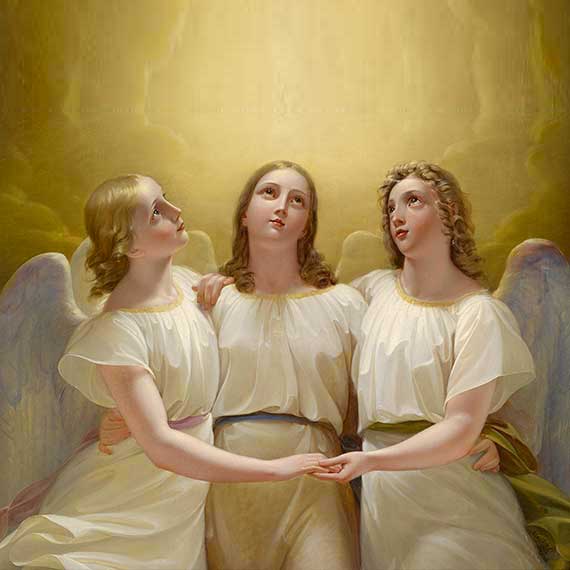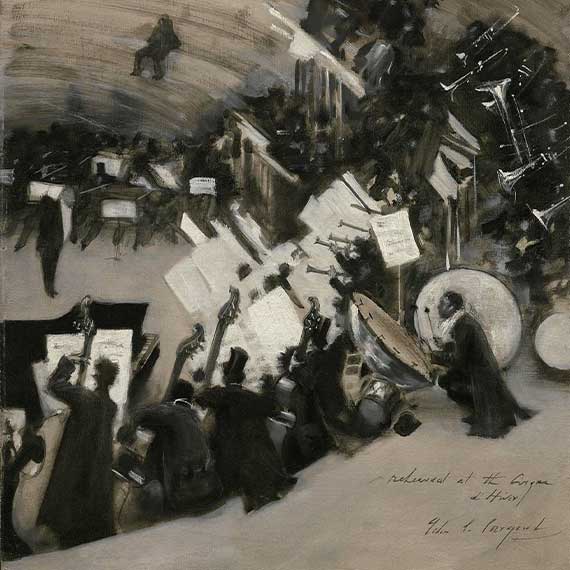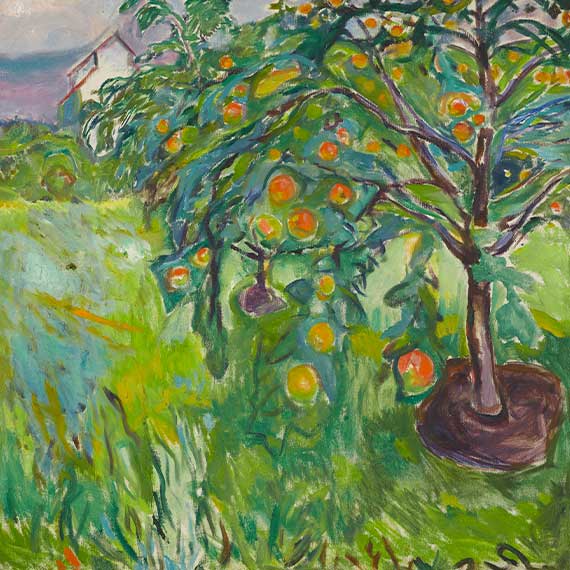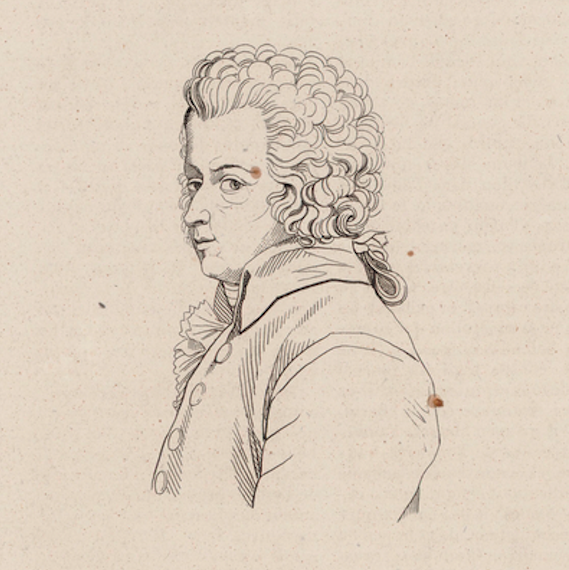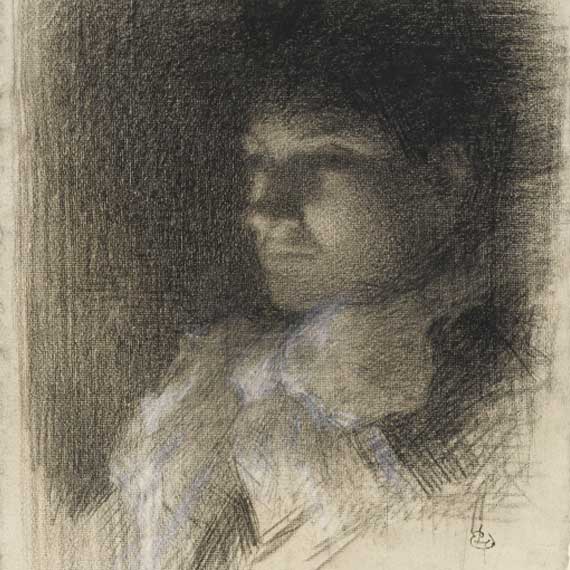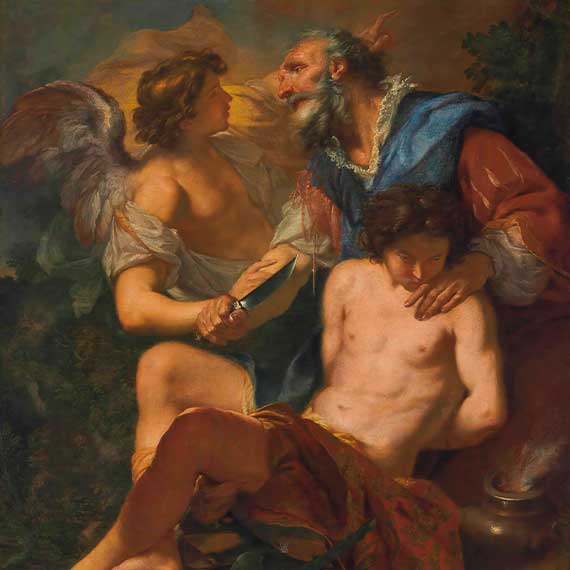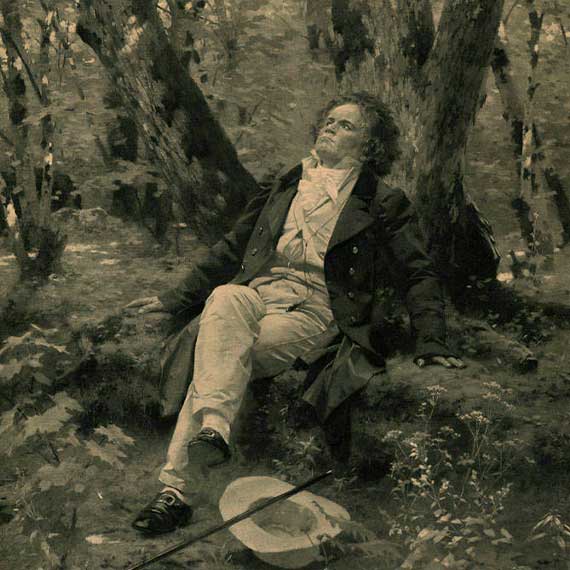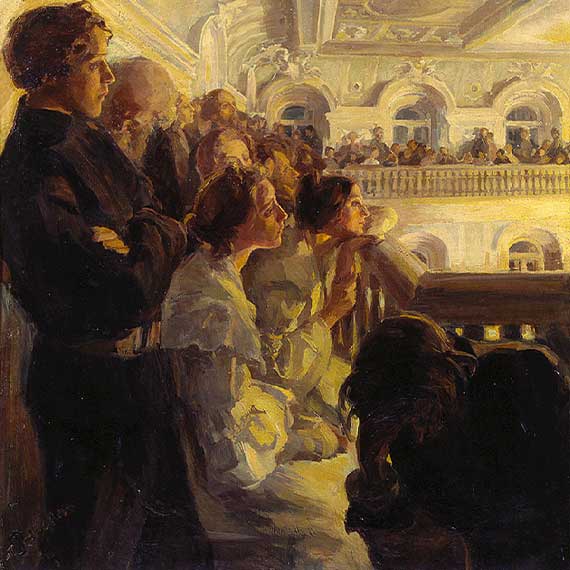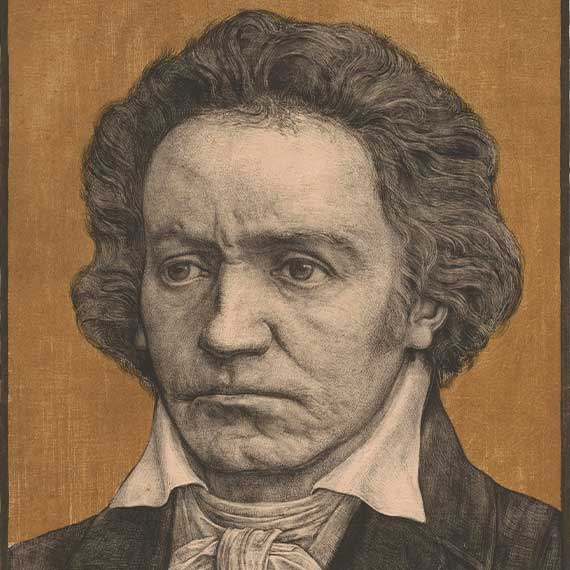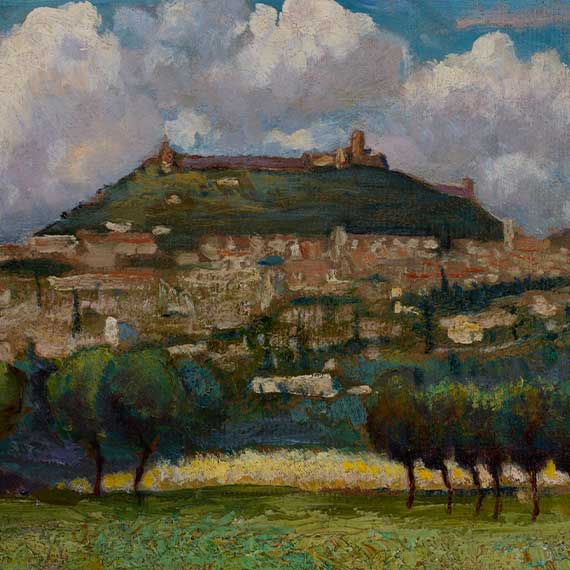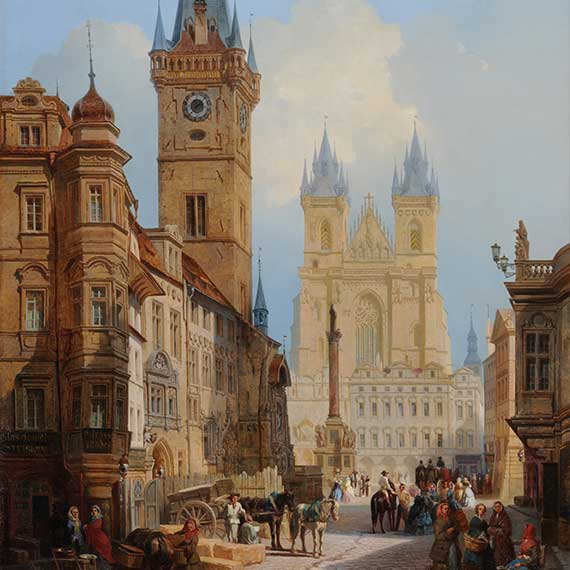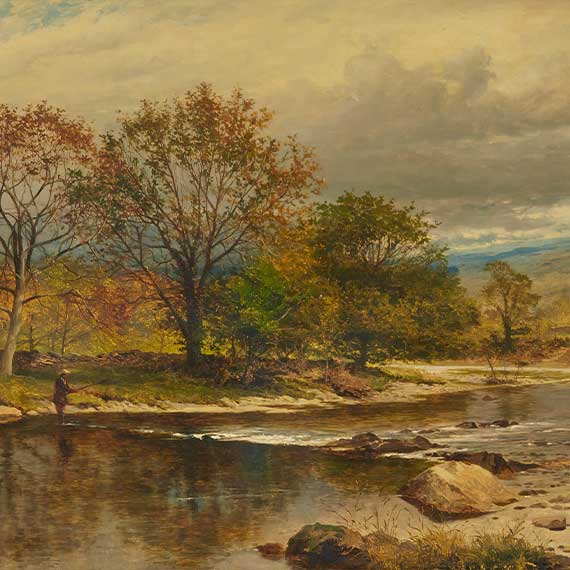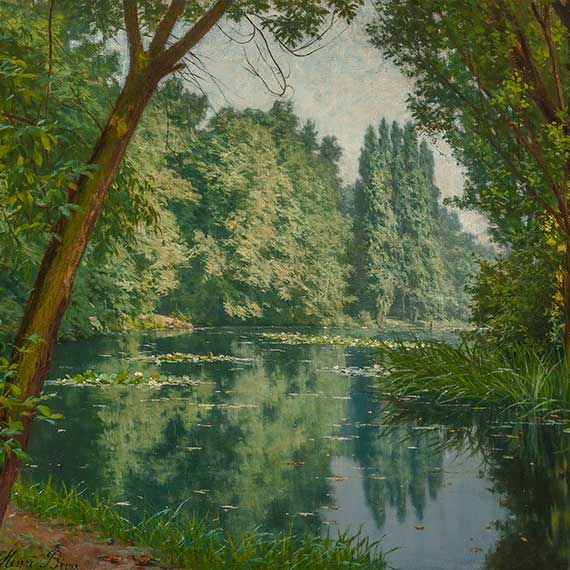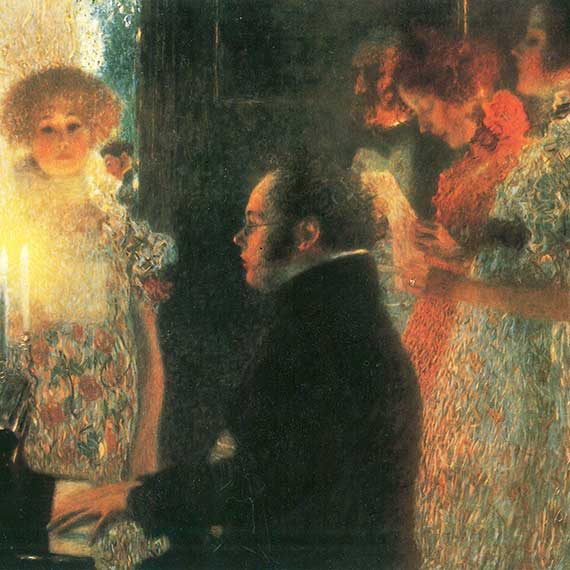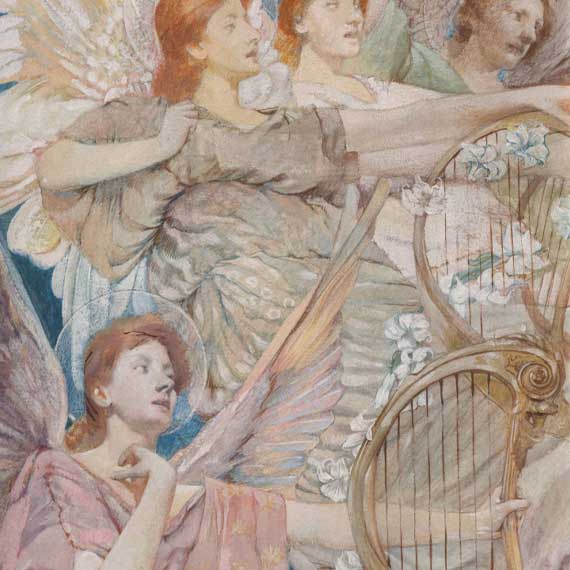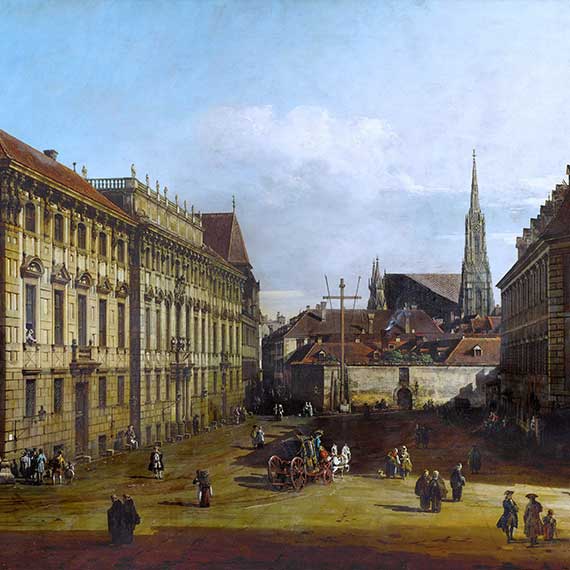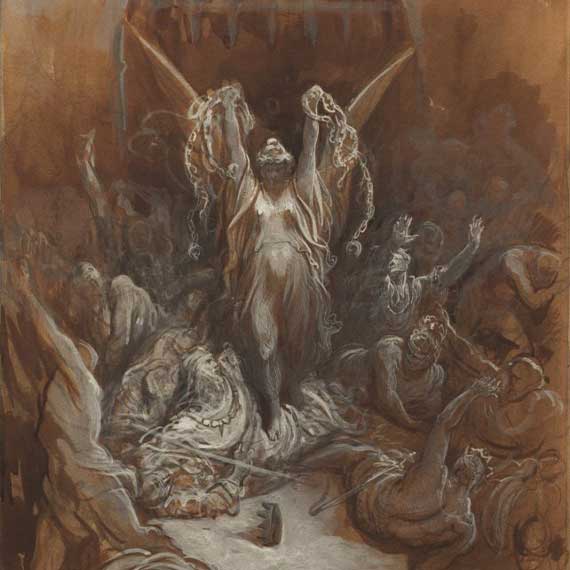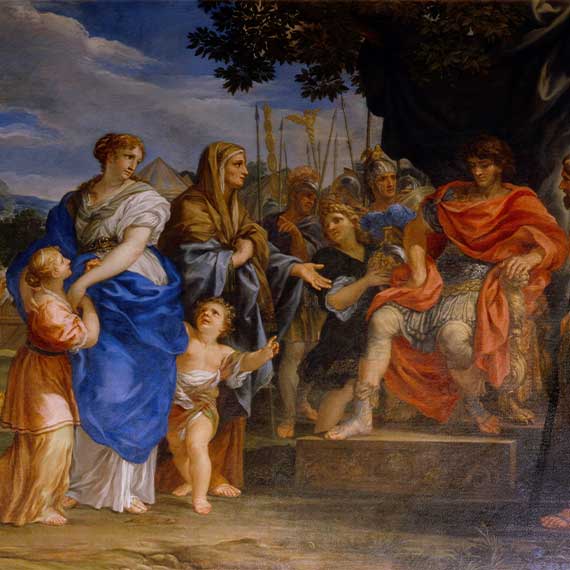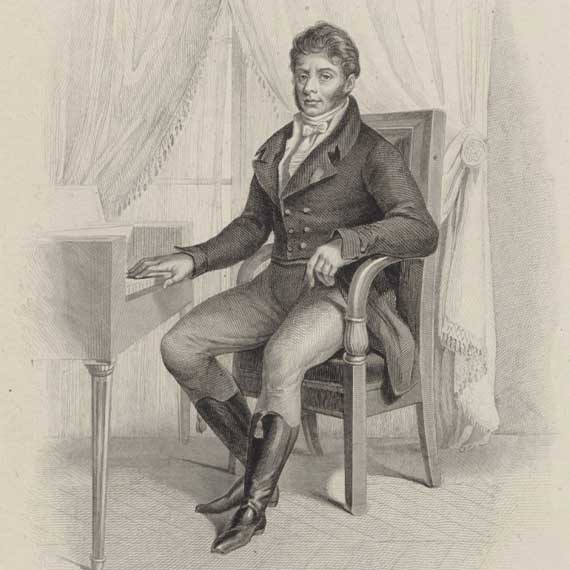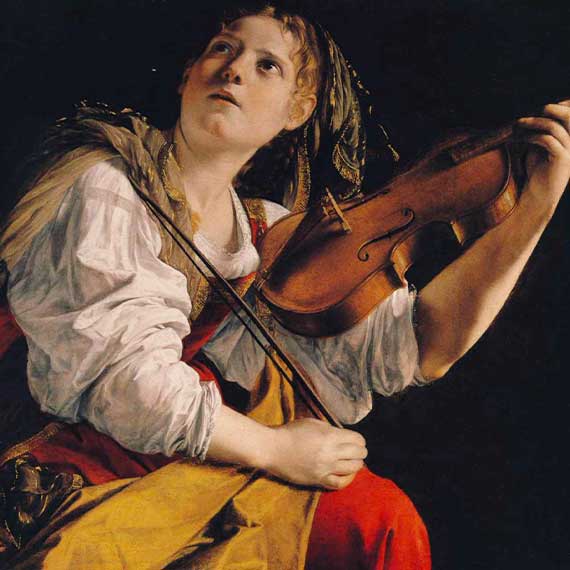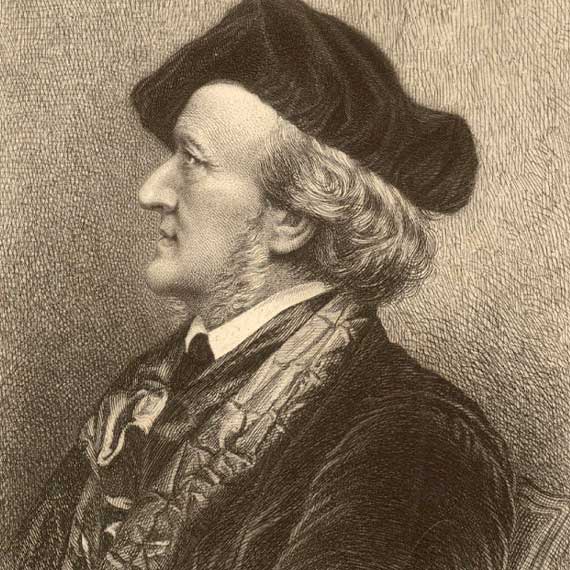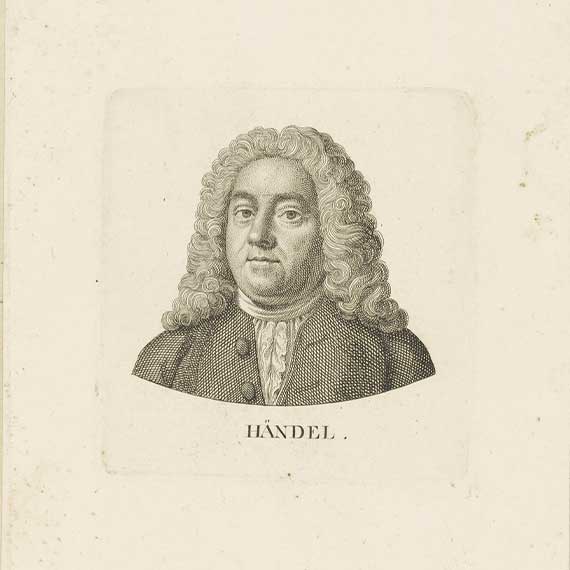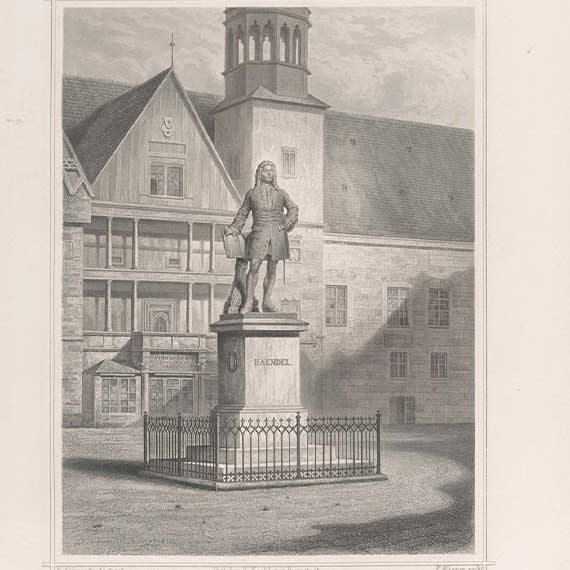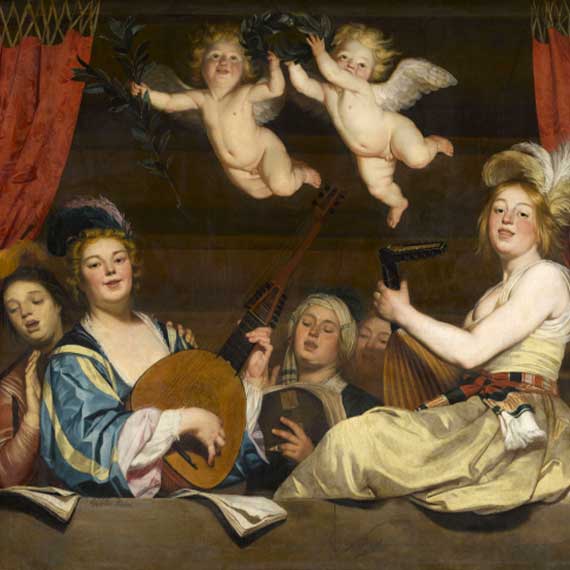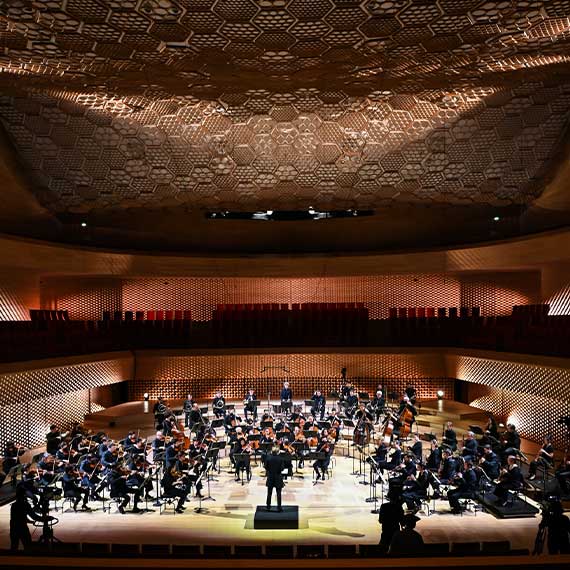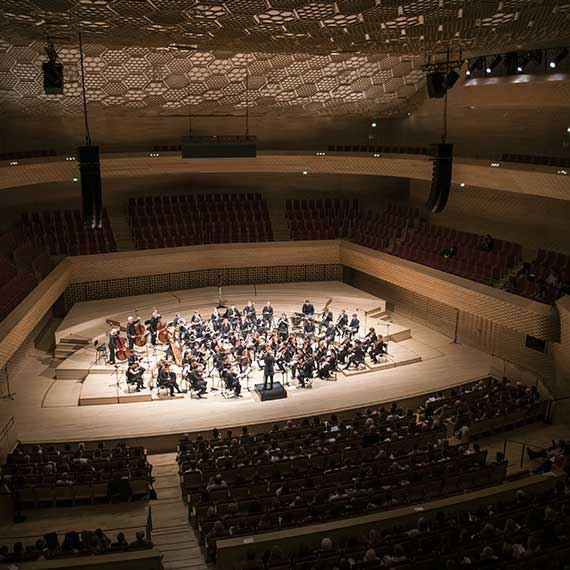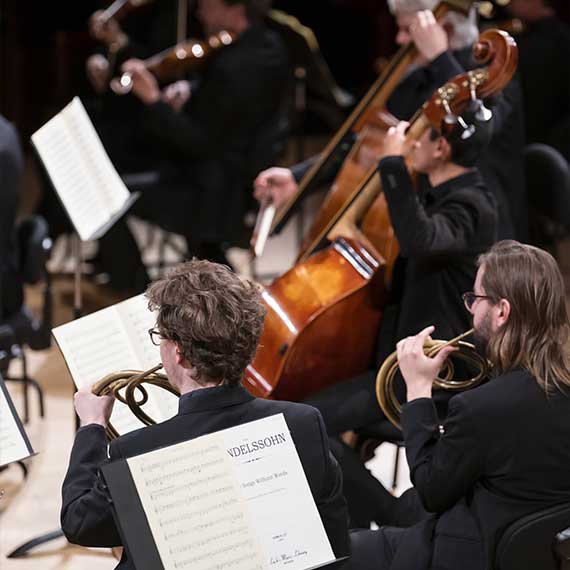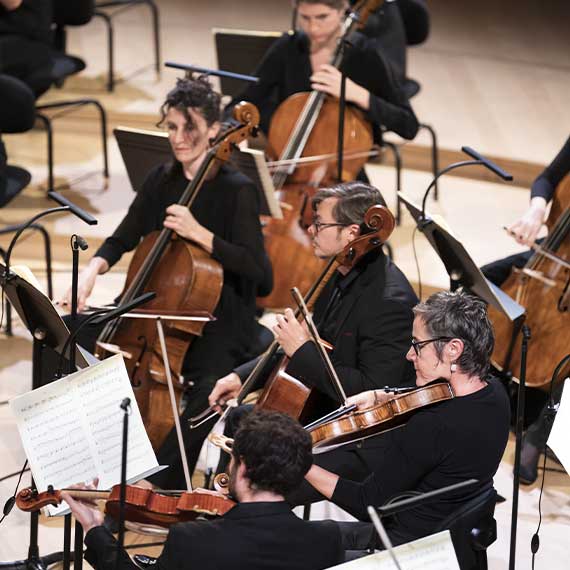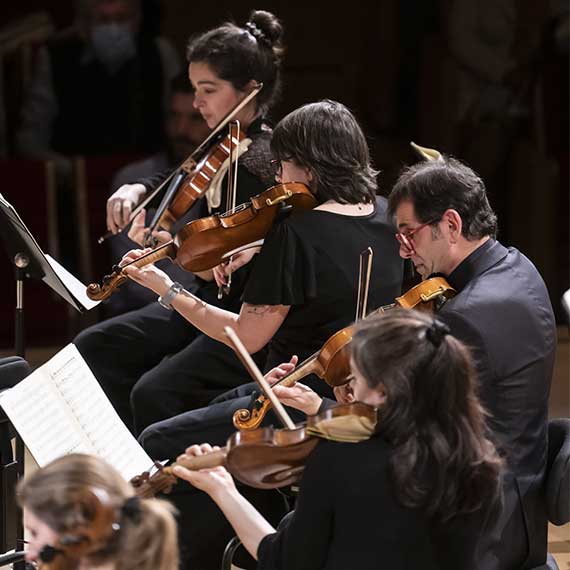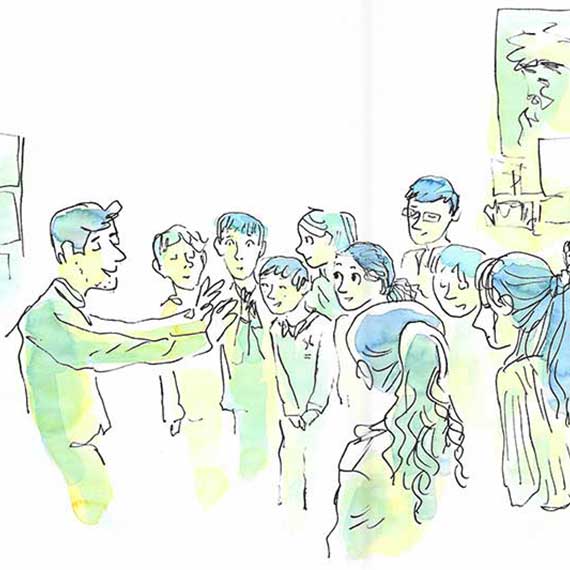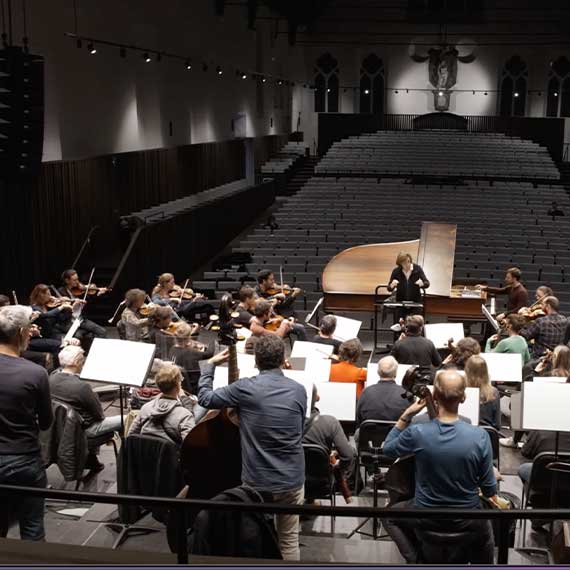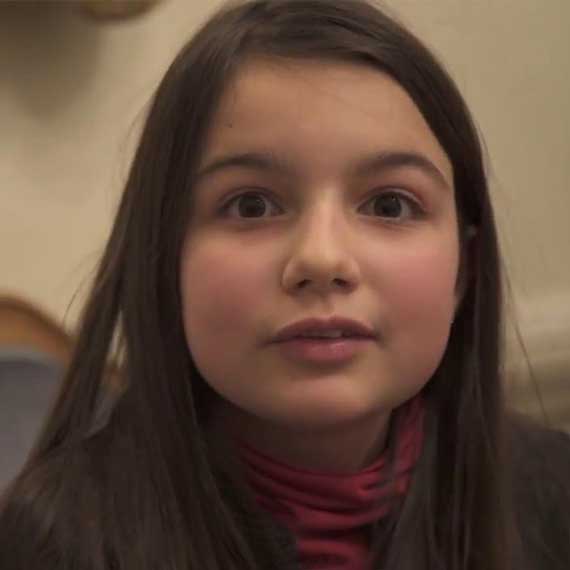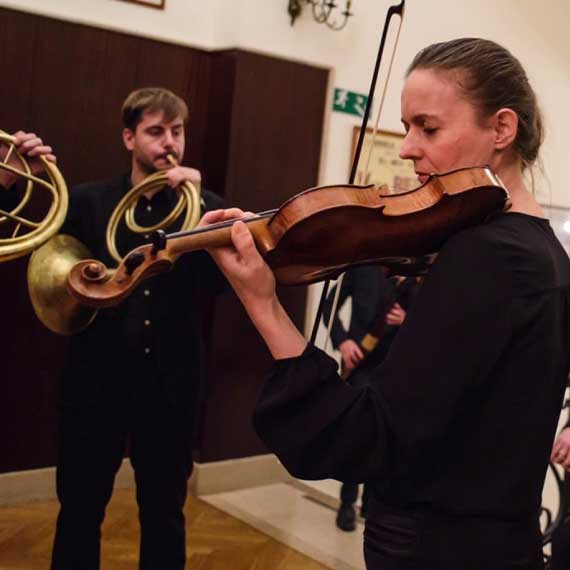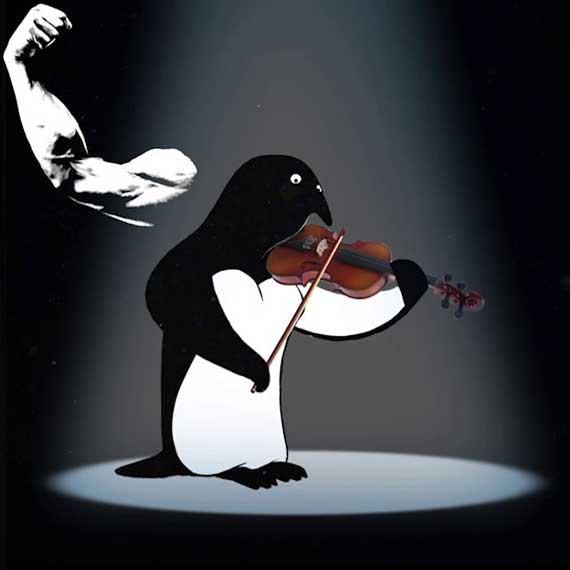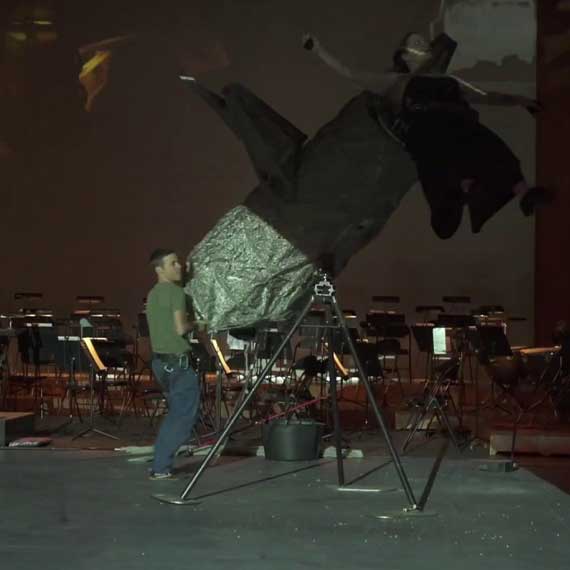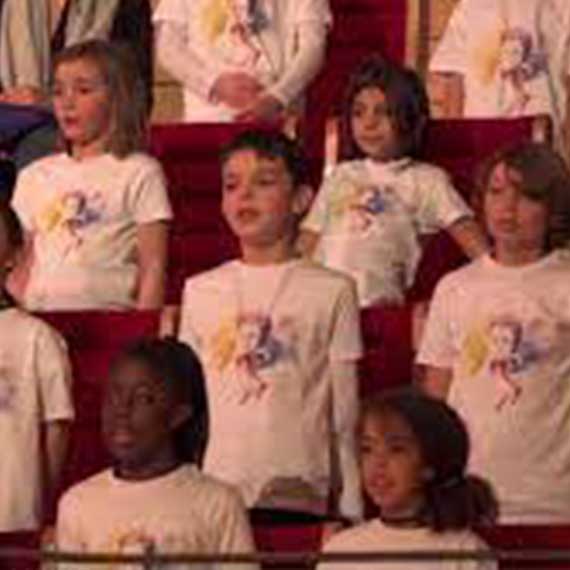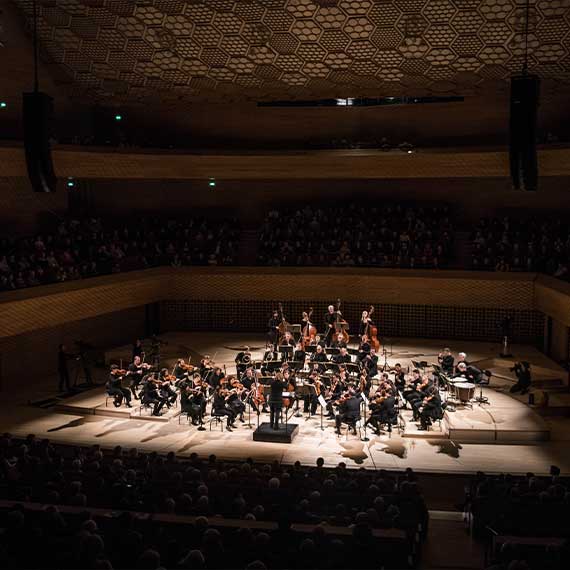Chapitres
Violin Concertos,
Sinfonia & Ouverture
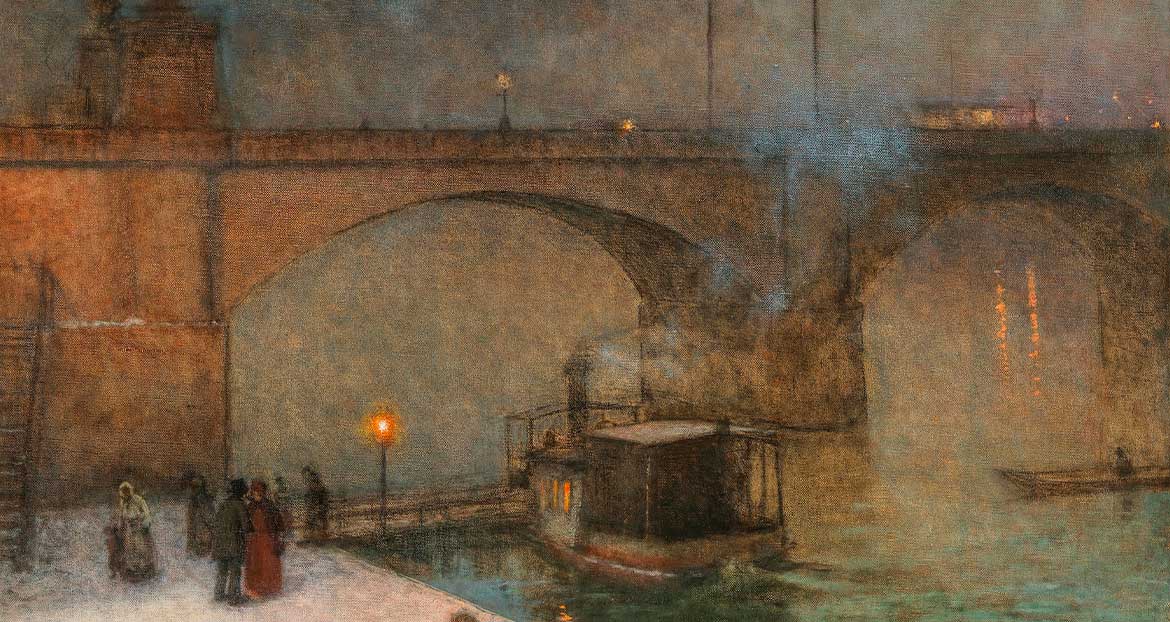
Program and cast
Works
Josef Mysliveček
Violin Concerto in D major
Sinfonia in E flat major
Violin Concerto in E major
Ouverture No. 2 in A major
Violin Concerto in A major
Soloist
Leila Schayegh, violin
Orchestra
Collegium 1704
Direction
Václav Luks
Program note
Mysliveček’s talent for composing violin concertos consisted mainly in his ability to write virtuoso passages that are not “empty”, as was often the case with less talented composers.
Mysliveček deals with solo passages in a much more interesting way and the listener cannot help but marvel at his seemingly inexhaustible invention. His music never lacks wit and he is always able to surprise and delight the listener’s ear.
Methods taken from Vivaldi’s style and from the Baroque period represent only one of the many sources that Mysliveček used in his violin concertos in order to achieve an exceptionally diverse musical expression.
Accent, 2018
Note of intent : Leila Schayegh
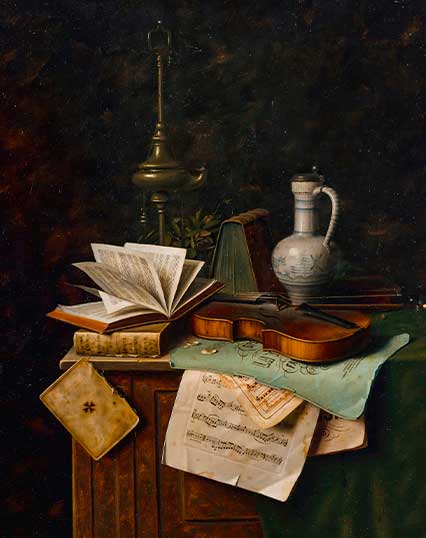
Still life of violin
William Michael Harnett - Artvee
There is something effusive about Mysliveček’s violin concertos, as if no thematic limitations apply to them. I was fascinated by this from the beginning, and it awakened my curiosity. From this music – like from the music of W. A. Mozart, Mysliveček’s contemporary and friend – one can hear that the author was also a superb opera composer: the quickly alternating themes are well defined in character, whether sounding serious or boisterous, pleading or alluring, questioning or majestic, friendly or imperious. Sometimes a new idea ties in with a previous one and elaborates on it, while elsewhere new ideas seem to treat the previous music with dismissive contempt. Figuratively, we find ourselves on the opera stage.
I have taken a theatrical approach to these concertos.
The Concerto in E major has moments of grandeur and splendour, but also melancholy – as if gazing towards a distant horizon.
The Concerto in A major, carefully worked out to the tiniest details, makes perhaps something of a capricious or even smug impression, while to me, the Concerto in D major represents a counterpart to Mozart’s Concerto in D major, KV 218: it is similarly definitive, radiant, and full of inner fire.
Mysliveček’s concertos are definitely more technically difficult than Mozart’s. (Incidentally, it is said that Mozart only began writing violin concertos after having heard a composition by his Czech colleague.)
The composer likes to use the instrument’s upper register, often even writing double stops in high positions – this virtuosic element suggests that Mysliveček must also have been an excellent violinist.
In particular, the slow movements show that Italy was his main centre of activity. Here and there, the very classically, transparently, and clearly written melodies allow room for improvised ornamentation – somewhat like in the late works of Tartini: nothing more than a Venetian gondolier would need to ornament one of his songs.
Our main goal was to show Mysliveček’s music for what it is: still unbound by strict classical form but profound at every moment.
Our main goal was to show Mysliveček’s music for what it is: still unbound by strict classical form but profound at every moment. I hope our élan and the joy of playing will be audible and will help enrich our present-day understanding of the Classical era.
I wish to thank Dominik Sackmann for his valuable assistance with preparing historically informed cadenzas and Václav Luks and all twenty-one musicians from Collegium 1704 for the inspiration and enormous energy they put into making the recording.
Translation: Mark Newkirk
Performance practice
Concerto in D major
Strings: 5.4.3.2.1
Continuo: harpsichord, bassoon
Sinfonia in E flat major
Strings: 5.4.3.2.1
Continuo: harpsichord
Violin Concerto in E major
Strings: 5.4.3.2.1
Winds: 2 oboes, 2 corni
Continuo: harpsichord, bassoon, double bass, vlc
Ouverture No. 2 in A major
Strings: 5.4.3.2.1
Winds: 2 oboes, 2 corni
Continuo: harpsichord, bassoon, double bass, vlc
Violin Concerto in A major
Strings: 5.4.3.2.1
Winds: 2 oboes, 2 corni
Continuo: harpsichord, bassoon, double bass, vlc
Diapason
430 Hz
Cadences
Written by the soloist Leila Schayegh with Dominik Sackmann
Autres ressources associées
Contenu lié
Bibliothèque
Retrouver les ressources associées à cette œuvre dans notre bibliothèque numérique.
Vous aimerez aussi
Dans le même thème

